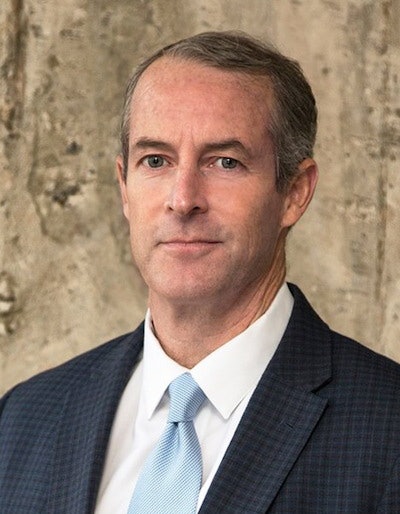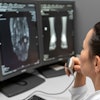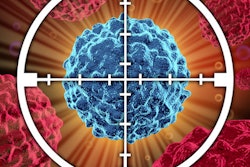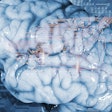
Cancer is the second leading killer of Americans, and that means that nearly every single reader of this article will be (or have a family member) impacted by cancer. This year, nearly 1.9 million people will be diagnosed with cancer in the U.S.,1 a figure that has been growing consistently over the past decade.
 Bob Jacobus, CEO of AI Metrics.
Bob Jacobus, CEO of AI Metrics.Early detection and cancer screening efforts are driving an uptick in cancer cases reported, simultaneously offsetting progress in reducing new cases with efforts across the spectrum of technology, from public health initiatives to advances in genetic profiling. Oncologists order roughly 12 million2 CT, MRI, and PET scans annually and depend on their colleagues in radiology to provide accurate, insightful, and timely patient information from which to base care decisions and communicate effectively to patients.
Despite the exponential growth of research to broaden the information sources available (i.e., genetic profiling and response monitoring, cancer-related biomarkers), the radiology report continues to be the ground truth of patient condition and therapy response for cancer. These reports are most often dictated into speech-recognition software, overly populated with extra wording, have a tendency towards subjective language, and must be carefully checked by the radiologist for inadvertent transcription errors.
During a memorable conversation from my early days in this field, an experienced oncologist noted, "I don't even read [the reports]. I just do the reads myself ... the radiologists all think they're Shakespeare." A jarring admission, and a problem worth solving.
My vote for "what's next in cancer imaging" is delivering to oncologists a dramatically higher level of advanced, image-based data for quality cancer care. While I'm an informed and interested observer, I'm neither a radiologist nor an oncologist, so this goal may seem mundane when stacked against the proliferation of scientific and technical innovations bombarding radiology today. But I would argue that this goal is better seen as overdue rather than mundane.
This is a simple but significant and achievable goal, complementing the advancements being made by colleagues in genetics, detection and screening, therapeutics, and other advancements in the fight against cancer mortality. By delivering clear, data-rich, objective reports, linking key elements of patient imaging history, and communicating key information clearly and concisely in a more standardized manner, radiologists enhance the investments and advancements being made across the spectrum of cancer research and care.
Specifically, I think our industry needs to deliver more innovation to address three key challenges that radiology faces in delivering the best quality for cancer patient evaluation:
- Limited access to expertise: Radiologists with oncologic expertise are too few and too concentrated in larger hospitals. Cancer disease assessment requires the use of multiple image modalities, body regions, and timepoints, as well as specific knowledge of a multitude of emerging cancer treatments and unique treatment responses. Currently, with no subspecialty defined specific to oncologic imaging, only seven fellowship programs exist in the U.S. for such training. Hospitals and radiology groups without a high volume of cancer reads typically also lack the resources and expertise needed to provide the highest-quality reads. Only 20% of U.S. counties have radiologists with subspeciality training in any area, so many cancer patients are being served by a general radiologist.
- Cancer reads are complex: Another challenge to dramatic improvement in this area is that advanced imaging-based data is time-consuming to generate. Advanced data goes beyond just reporting findings and includes calculations and classification of patient response into categories that require knowledge and implementation of guidelines and criteria (e.g. LI-RADS). And, advanced data includes a longitudinal component, which requires time-consuming comparison across time points. From a financial standpoint, the relative value unit (RVU) for an abdominal CT with contrast is the same no matter the indication, so the economics for a complex metastatic cancer follow-up are terrible when compared to the same reimbursement for a quick abdominal pain assessment.
- Limited communication tools: Advanced imaging-based data is difficult to communicate. Standard reports include narrative text, with measurements mixed in and easily lost. Compared to graphs and tables, text-based reporting is a poor fit for communicating longitudinal data. Adding images further enhances communication, as has been well-documented. But it is seldom employed in practice.
The acceleration of therapeutic- and technology-driven innovation in cancer detection, treatment, and monitoring is of tremendous benefit to patients. Radiologists are a critical link in the chain of progress and have much to offer to ongoing successes. Radiology value is maximized in this chain when it is applied with focused expertise in cancer, and when that expertise is communicated in a highly effective manner using the best reporting tools available. My hope is that this is the focus of what's next in cancer imaging and what is to come.
Bob Jacobus is CEO of AI Metrics, a developer of AI software.
The comments and observations expressed are those of the author and do not necessarily reflect the opinions of AuntMinnie.com.
References
- CA Cancer J Clin 2022;72:7-33.
- https://stats.oecd.org/Index.aspx?DatasetCode=HEALTH_STAT (84.5 million CTs, 35.7 million MRIs, 2.2 million PET scans; based on hospital data, we estimate about 10% are for ongoing cancer patients)



















